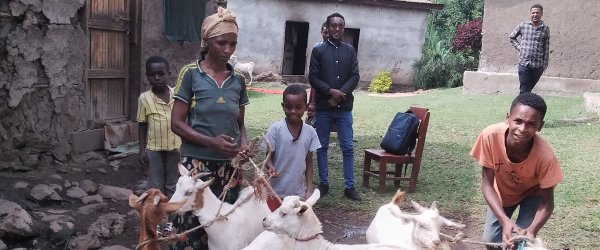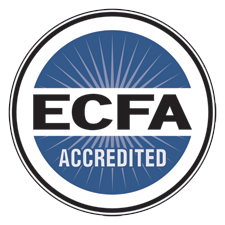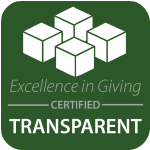How does the cycle of poverty keep people trapped in the endless loop? Why is it so difficult to escape? In this blog, we’re breaking down some of the reasons that people remain trapped and how HopeChest’s programs support people on their journey to beat that cycle!
When you can’t afford your daily necessities, every other priority gets pushed down the list. In the short term, food is always a more immediate need than a school uniform. Food is also not a one-time purchase- people have to continue working to have enough money for their next meal. And when unexpected events happen, it sets struggling people back further. Some of these setbacks could include anything- an unexpected pregnancy, an illness or injury, or a global pandemic.
HopeChest being able to support nutrition in the countries we work in, like by helping children get some of their meals, snacks and vitamins at their CarePoint, allows some relief for parents struggling to meet their families’ needs. One less expense allows a family to spend that money on other necessities or save it for a potential emergency expense. CarePoints also often offer services like medical check-ups, workshops, and leadership training for children that will help them grow into responsible, healthy adults with good habits.
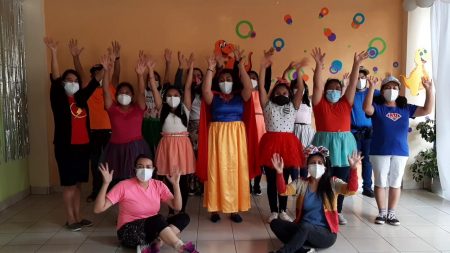
Impoverished people often work difficult and many of the most dangerous jobs, which increases the chance of illness or injury. Medical care is expensive, and often inaccessible in rural areas. Every day that someone is sick or injured is another day that they aren’t making money to feed themselves and their families. Many people are forced to rely on the kindness of others, organizations like HopeChest, or sadly, simply go without. When people don’t have a specific skill set, they often work as day laborers- which is inconsistent and leads to an unreliable income. If the parents or guardians in a family can’t make enough to support their families, they are often forced to pull their children from school so that they can help earn money. This is one of the most common reasons children in impoverished areas don’t finish their education. In the long run, this makes the situation worse, because an education leads to that child being able to earn more income as an adult someday.
To make matters more complicated, large purchases and ventures like buying a house, starting a business, or buying livestock require investing up front. These big milestones aren’t just markers of success, but greatly help one from slipping back into poverty. But for vulnerable people, they’re too busy surviving to be able to amass that amount of wealth at one time, and have no valuable collateral to offer lenders. Therefore, they’re denied some of the biggest opportunities that could help them escape poverty. Additionally, in the long run, they end up spending even more to survive. One popular anecdote is of a man who can afford one well-made pair of boots. He will only buy one pair of boots that will last a long time- while a poor man who cannot afford that purchase all at once will end up buying several pairs of cheap boots that will wear out quickly and repeatedly over that same time period.
One of the ways HopeChest helps to combat that cycle is by helping guardians of CarePoint children and other community members get that jump-start with Village Savings and Loan Associations and Self-Help Groups. Members of these groups save their money together, and take turns taking loans from the collective pool to start small businesses or acquire seed and livestock. Then those members begin generating revenue that they weren’t able to before- and begin adding more money to the savings pool. Their collective resources grow, and the families as well as the economy of the rural community benefits!
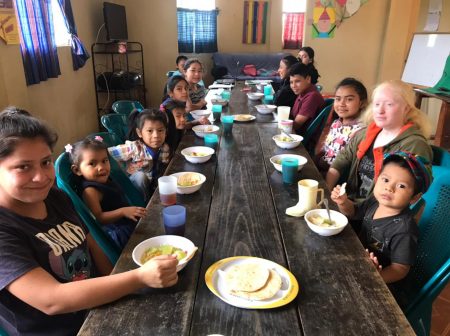
In impoverished countries, natural disasters and conflict disrupts regular life more than in more developed countries, because it takes them longer to recover from these events. This is due to factors like underdeveloped infrastructure, rural populations, and lack of emergency services. Many people in impoverished countries had to face Covid-19 on their own, without much government help or nearby medical aid. With lockdowns and social distancing, many usual income-generating activities couldn’t be safely conducted, so many people lost their jobs indefinitely. In other cases, the impoverished worked essential jobs, and so they were more often exposed to the illness. If they got sick, they couldn’t work, and would go without their necessities. Without robust infrastructure and support, many impoverished and vulnerable populations around the world have been slow to recover from the pandemic’s economic impact on their lives. But even in a time of seeming despair, the people HopeChest had supported in the past were able to adjust in unexpected ways to serve their communities during the time of struggle.
For instance, in Guatemala, women who had learned how to sew clothing before Covid-19, were able to use their newfound skills to make masks for their community when they were not widely available. HopeChest support was able to help alleviate the strain on the community in other ways too, like building hand-washing stations and distributing sanitizers and hygiene materials.
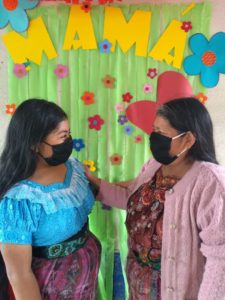
HopeChest’s model focuses not just on the short-term needs of a community, but the overall plan that God has for a community and their future. The ultimate marker of success is that a community no longer needs HopeChest’s support to thrive in their own environment. The opportunity to escape the cycle of poverty and get on their feet was all that was needed.

